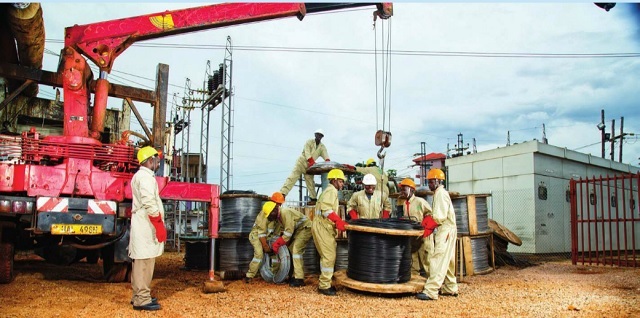
Why Uganda needs to attract new investors to consume excess electricity
Kampala, Uganda | JULIUS BUSINGE | On Nov. 16, power distributor, Umeme Limited held a media dialogue in Kampala where top managers – Selestino Babungi (managing director) and Sam Zimbe (deputy MD) answered questions about their work since 2005. The Independent’s Julius Businge attended and here are excerpts;
What is your reading of the energy sector as we speak at the moment?
The energy sector has been growing at around 9%. We expect a lot of demand in respect to power as new consumers come onboard. We are seeing many companies in various sectors expanding. Isimba and Karuma will come in, it is critical to create demand for this electricity. If 70% of our 850MW electricity is consumed by industrial customers, it means we need to increase the industrial base by another 70% to create demand for about 900MW of power that is coming on board in the near future. Otherwise, if that does not happen, you will have brilliant investment facilities generating power which is not put to productive use and yet the country needs it to develop. The focus for demand will be on how many new investors will come into the country to be able to utilise the energy that will be coming on stream. We believe there is a relationship between the energy sector and performance of the economy. Uganda has 78% of the population below 30 years of age – which is an opportunity for providing labor to investors dealing in various sectors. We think that the cost of credit should be much lower to attract new investors who would demand the new power.
What would you say are Umeme’s key milestones since it was cleared to distribute power to businesses and Ugandans in 2005?
Generally, the service has improved. More reliability has been recorded. We have invested a lot in human capital and the company continues with its journey of growth and expansion in line with serving customers while delivering on government’s agenda.
How has the regulatory environment impacted on Umeme’s concession targets?
We have many regulators; the Electricity Regulatory Authority; Capital Markets Authority because we are a listed company. We also have regulators in Kenya because we are cross-listed. Uganda National Bureau of Standards sets standards and we deal with them. National Environment Management Authority also works with us in ensuring that our work goes on well. With all these regulators, starting with the CMA, we have never breached any clause in the law. When we started in 2005, there were targets that the ERA set for us to achieve. They include loss reduction which we reduced from well above 38% to now 17%. The other target was on revenue collection rates which were at 75% and we achieved the target of 92% by 2012. The third was in respect to power connection – where we were supposed to make 15,000 new connections per annum which we surpassed – our connection rate by 2012 was well over 70,000. The fourth one had to do with our operating costs – they gave us a budget which we worked with and delivered other targets.The other associated target was with regard to investment. We had to invest US$65 million in the network by end of 2012. The regulator has from time to time introduced new amendments including those of 2012, which affected the way the revenue requirement is computed. We had issues with these amendments which we continue to engage on with government.
We understand you are engaging government on having your concession extended or renewed. How far?
The decision to renew the concession is a government decision. We have run 12 years and have eight years left. But we must also be mindful that we are the harness point for government in terms of investments. We know in two years’ time, we will have over 700MW of power coming on stream. I am also aware of transmission facilities being built. I am also fundamentally fully aware that this power generated will be utilised. We need to build up the digital network to increase access so that the power generated is utilised. It is fundamental that as we drive these investments it is time now to mobilise long term capital or financing. No one will give you long term financing over a short term kind of contract. It is therefore very important that we start those discussions now in the spirit of mobilising capital and that is where we are at the moment. We have notified government of this need for investment and the need for mobilising capital which require long term contract.
What explains the 30% of your customers that are still falling outside the pre-paid metering system?
Our target is to convert all our customers to pre-paid metering by end of 2019. All new customers coming on stream are being connected to the pre-paid system. This will help us achieve high collection rate targets but also give consumers a new experience about power purchases and consumption.
 The Independent Uganda: You get the Truth we Pay the Price
The Independent Uganda: You get the Truth we Pay the Price




Thank you for your useful website